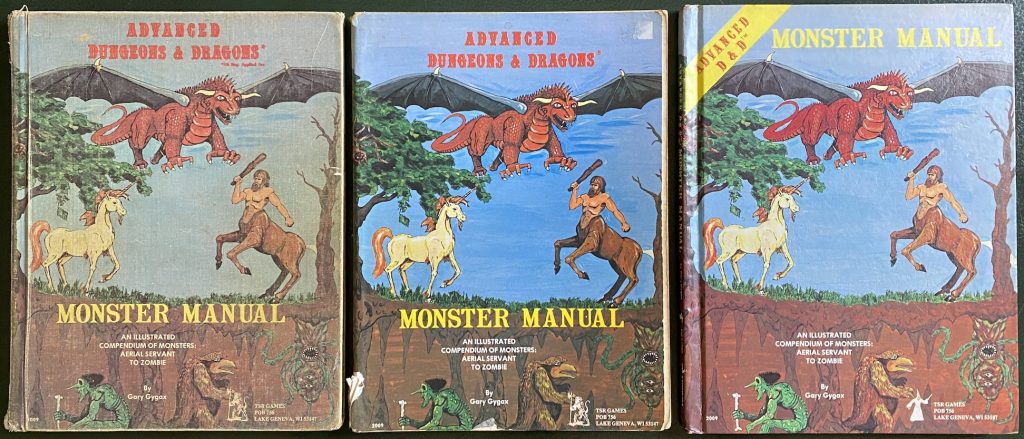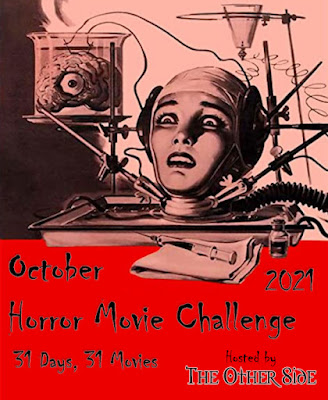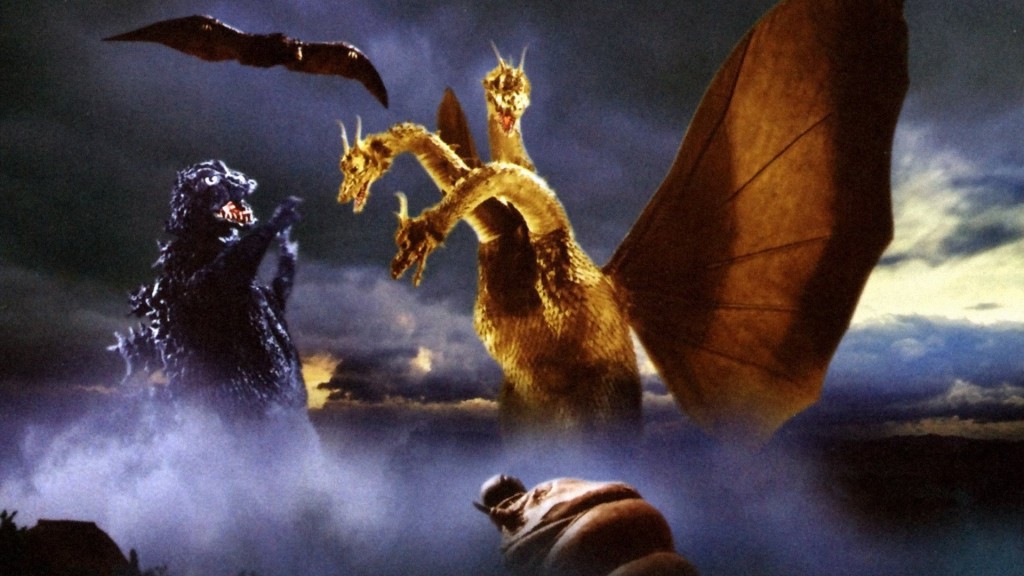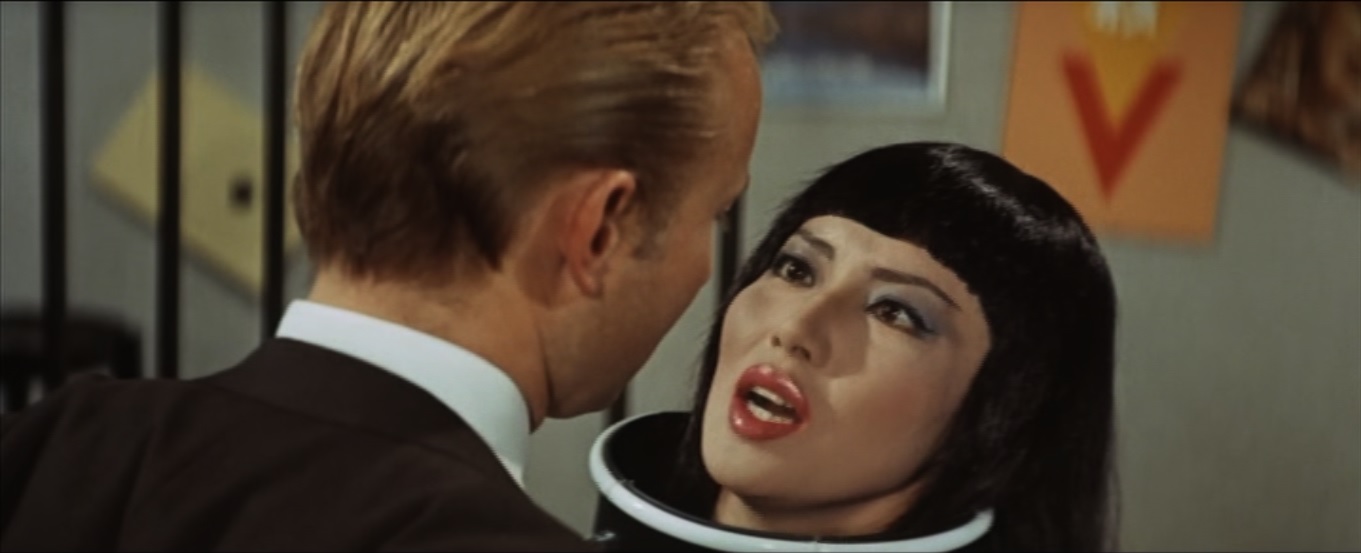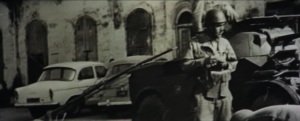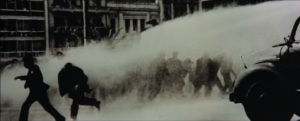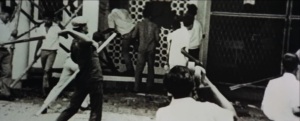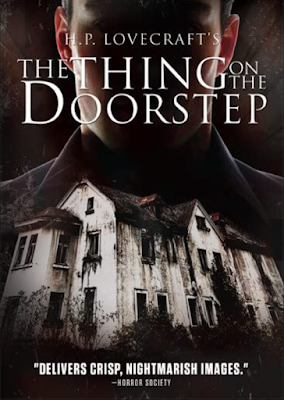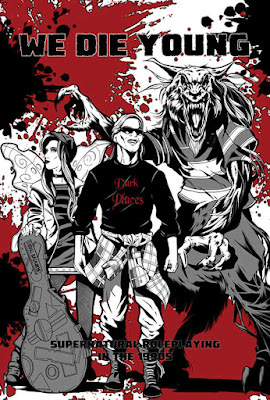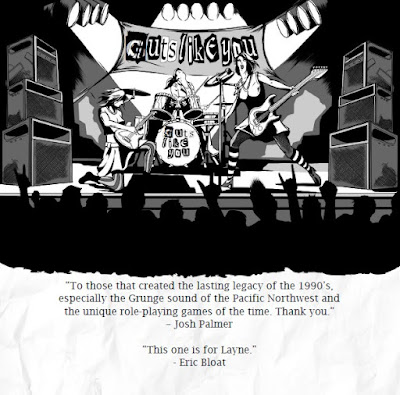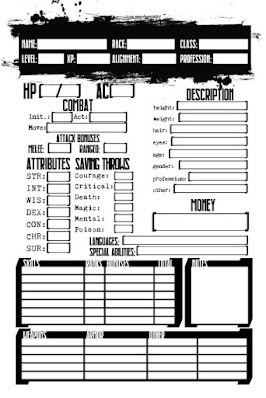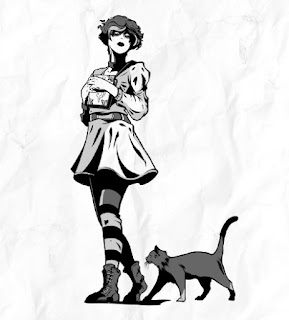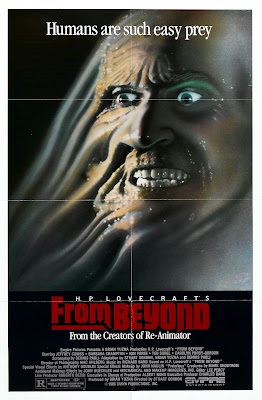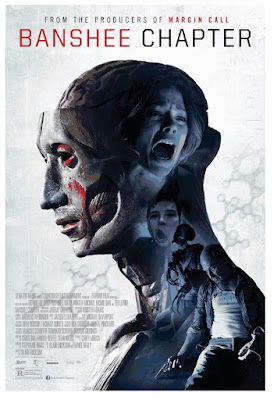
It is Friday, October 13th, 1307. For over two hundred years, the Poor Fellow-Soldiers of Christ and of the Temple of Solomon, commonly known as the Knights Templar, has dedicated itself to protecting Christians making their pilgrimage to the Holy Land. Blessed by the Church and an official charity, the militant order of monks has become a power unto itself, a series of Papal bulls having placed the order above local laws, rendering them exempt from taxes, borders, travel restrictions, and legal oversight from any power short of the Papal Throne itself. In addition to protecting the Holy Land and participating in numerous Crusades against the infidel, the influence and power of the Templars has spread far beyond Outremer, primarily through the clever management of the vast tracts of lands given to the order as gifts, but also through the financial and banking network that it developed, ensuring the safe and transferred transit of credit. Yet in recent years, the reputation of the militant order of monks has suffered. Military defeats have forced it out of the Holy Lands and lost it access to the sites it was supposed to protect and there rumours of mysterious rituals and misdeeds, ranging from idol worship, sacrilege, and denying Christ to financial corruption, fraud, and secrecy. Then there are fears that the Knights Templar wanted to establish its own state in Europe, equal to any kingdom. Lastly, many of those kingdoms, including their monarchy and their nobility owed vast debts to the Knights Templar. It was for these reasons that the Templars fell from grace and from power.
On the morning of Friday, October 13th, 1307, French forces, on orders from King Philip IV of France with permission from Pope Clement V, moved in secret to arrest dozens of Knights Templar in the Templar’s Parisian stronghold, the Enclos du Temple, including their Grand Master Jacques de Molay, and their Commander of Normandy, Geoffroi de Charney. Both would ultimately be charged with heresy, excommunicated, and burnt at the stake. On the morning of Friday, October 13th, 1307, as the Enclos du Temple was assaulted by French troops, Grand Master Jacques de Molay would his last orders. Faced with betrayal and defeat, he commanded the last Templars to take the secrets of the order to safety. They would be the last thirty to escape the fallen stronghold and theirs would be a perilous journey across Europe in search of sanctuary, harried all the way first by forces loyal to King Philip, and then the Inquisition. Did they find sanctuary and do they ever discover the true secrets of the Poor Fellow-Soldiers of Christ and of the Temple of Solomon?
This is the set-up for
Heirs to Heresy, a roleplaying game published by
Osprey Games in which the last thirty free members of the Knights Templar carry the order’s great treasure and secret to sanctuary—to Avallonis. Avallonis may be a mystical dimension that only the gnostic Templars know how to access; a demonic realm to which the all the souls of the Templars are bound to; a faerie city, shrouded in mist with gleaming silver towers; the city of Lisboa where its friendly King will shelter the Templars from the wrath of the King of France and his lackey, the Pope; a state of mind or even a second word that will grant them eternal reward; and ultimately, even a lie… As to the great treasure, it might be the Grail, the Lineage of Christ, the idol of Baphomet, the Library and Seal of Solomon, or something else. The exact nature of both destination and treasure are up to the Grand Master—as the Game Master is known—to decide, although the length of the flight from Paris will heavily influence the former. The further the destination from Paris, the longer the campaign. Thus, if the destination is London, then the campaign will be relatively short, whereas Malta, owned by the Knights Hospitaller, sister order to the Knights Templar, would be a longer journey and thus a longer campaign. Similarly, The Grand Master will also need to set the degree of Esoterica available in the campaign and thus potentially, the Player Characters. This can be mundane, infused, or mystical, and the higher the degree of Esoterica, the more likely that magick will play a role in the campaign, including the foes that the Player Characters encounter. Finally another limiting factor upon an
Heirs to Heresy campaign is the number of Templars who escaped Paris—thirty. If they all die before any one of them reaches sanctuary with the treasure, then both the secrets and the last treasures of the Knights Templar will have been lost.
Of course,
Heirs to Heresy is not the first roleplaying game to explore this legend, designer John Wick having done so with
Thirty in 2005. Although they share similar themes, Thirty emphasises the esoteric, whereas
Heirs to Heresy explores that aspect of the Templar legend as a range of options. The other difference, of course, is that what constitutes as safe and good roleplaying is today is openly discussed and stated. Thus,
Heirs to Heresy is up front about what is. In the foreword, the author rejects the adoption of the iconography of the Poor Fellow-Soldiers of Christ and of the Temple of Solomon, the Knights Templar by hate groups which espouse white supremacy, religious intolerance, and persecution. It is also clearly stated that whilst
Heirs to Heresy draws very much upon the history and religions of the fourteenth century, it is not written as a historically accurate roleplaying game. Rather it blends history, mystery, and legend to create the potential for exciting stories—much like a film or television series would. Ultimately, it is more historical fantasy, and that includes the types of characters that the players can roleplay. The Knights Templar recruited from France, Germany, England, the Iberian Peninsula, and Italy, as well as Scandinavia, the Middle East, North African, and other Mediterranean countries. As long as a Templar is a devout Catholic, there is no bar in terms of origin, or indeed, his or her gender.
A Knights Templar is defined by six Attributes—Might, Vitality, Quickness, Intellect, Courage, and Spirit as well as fifteen skills. The Attributes typically range between zero and four, and skills between zero and five. To first create a Knights Templar, a player decided whether his character is a Dedicated Knight or a Versatile Knight. This will determine the spread available for his attributes. A Dedicated Knight has a mix of higher and weaker Attributes, whilst a Versatile Knight has a more balanced range. Similarly, whether a Templar’s training, either Focused training or Well-Rounded training, determines whether he has mastered one skill if Focused training, or a wider range of skills if Well-Rounded. With Focused training, a Templar has fewer skill points to assign, but two skills can be high, whereas with Well-Rounded training, there are more points, none of them can be high. Notably, a Templar does not have any combat skills or a Horsemanship skill. Every Templar is supposed to be skilled in both, so they are covered by his Attributes rather than dedicated skills. This is in addition to determining what the character looks like, his nationality, whether or not he has seen combat, how far he has travelled, his degree of spirituality, when he became a Templar, and so on. A player can also roll for quirks for his Templar and lastly choose some relationships with his fellow Templars.
Our sample Templar is Gudbrand Signysdottir, originally from Scandinavia, who travelled to Constantinople with her merchant father. Although he was killed by bandits, she saw how fiercely the other members of the caravan were protected by a band of Templars. Scarred in the attack, she decided to join the Templars and dedicate her life to the White Christ rather than return home where her brothers would take their father’s business.
Name Gudbrand Signysdottir
Nationality Scandinavia
Languages: French, Latin, Old Norse
Quirks: Exceptionally long hair, scar over one eye
ATTRIBUTES
Might +1 Vitality +1 Quickness +3 Intellect +2 Courage +3 Faith +2
SKILLS
Athletics 3 Awareness 3 Battle 3 Craft – Courtesy 3 Explore 3 Healing – History – Hunting – Inspire 3 Insight 3 Persuade 3 Religion 3 Stealth – Travel 3
HEALTH
Maximum 15 Crippling Blow 5
COMBAT
Melee Attack +4 Melee Damage Bonus +2
Ranged Attack +5 Ranged Damage Bonus +5
Defence 18
Damage Reduction 7
WEAPONS
Longsword (1H) d12 (On a 1: ignore Damage Reduction)
Londsword (2H) 2d8 (On two 1s: ignore Damage Reduction)
Dagger d6 (On a 1: ignore Damage Reduction)
Mace 2d4 (On a 1: permanently reduce Damage Reduction by 1)
Axe d8 (On a 1: shatter shield, or reduce Damage Reduction by 1)
Crossbow d10 (On a 1 or 2: ignore Damage Reduction)
ARMOUR
Chainmail 5 Damage Reduction
Shield +2 Damage Reduction
Mechanically,
Heirs to Heresy is straightforward. To perform a Test, a character’s player rolls two ten-sided dice and adds an Attribute and a Skill to beat a target. A task which requires effort has a target of fifteen, challenging is eighteen, and difficult is twenty-one. If the result beats the target and consists of doubles, it is a critical outcome. This means it is done with a flourish, perhaps faster, with a better effect, or similar. In combat, it means double damage. If the task is made with Advantage, three ten-sided dice are rolled and the best two selected. Conversely, if the task is made at a Disadvantage, three ten-sided dice are rolled and the worst two selected. Advantage can be gained from the situation or one Templar can grant by supporting another. Notably
Heirs to Heresy does include fumbles in its rules, because the Templars are meant to be competent and because fumbles are boring.
In addition, as God’s chosen warriors, every Templar can bring his faith and commitment to bear on his situation. To reflect this, he has Faith points to spend on various effects, including adding his Faith Attribute to a single Test, damage total, or reducing incoming damage by the same, to reroll a single Test, and if they factor into a campaign, power esoterica, Gifts, and Relics. Faith points are recovered slowly, a point every Sunday morning or by spending an hour in deep prayer at a Church or Catholic Holy Site. The latter requires a Test. However, Faith points are lost if a Templar breaks his vow of chastity, steals from the less fortunate, fails to pray upon awakening, or leaves a fellow Templar behind who could not have been rescued.
Combat is slightly more complex, but throughout Templars intended to be highly competent and capable combatants. In the main, the opponents a Templar will face are Mobs and Fearsome Foes. Mobs are either particularly courageous or fanatical to want to attack Templars, who can easily outfight them. A Templar always goes first and kills or defeats one member of the Mob per point of damage inflicted, whilst a Mobs only acts when a Templar fails to deal damage. Thus the Templar will in general have the upper hand and only when he fails will be vulnerable.
A Fearsome Foe represents a challenging opponent who fights like a Templar and can attack first before a Templar can act. Initiative is handled by pulling tokens out of a bag—one colour for the Templars and one for the Fearsome Foes, and when one colour is drawn from the bag, one of its associated combatants can act. Combat covers manoeuvres such as furious blows, defending, parrying, and so on. One interesting element of combat occurs when damage is rolled. An attacker can hope to roll high and simply inflict a large amount of damage after Damage Reduction has been deducted, but if a one is rolled with several of the weapons the Templars commonly wield, the damage ignores Damage Reduction. What this means is that an attack can inflict damage if even the damage roll is low. Other weapons have different effects when a one is rolled. When a Templar suffers damage greater than his Crippling Rating, his player begins ticking off boxes on his Templar’s character sheet, which can be stunned, bleeding, broken limb, or worse.For example, Gudbrand Signysdottir and her companions have fled the chapterhouse in Paris and reached the outskirts of the city where they encounter a patrol consisting of two knights—both treated as Fearsome Foes and a Mob of foot soldiers. They are challenged and combat ensues, her companions engaging the Mob and one of the enemy knights, whilst Gudbrand Signysdottir faces off against the other. When the Grand Master draws the token for the NPCs and decides that the knight will charge and attack. She rolls the two ten-sided dice and adds the knight’s Attack bonus of +6. This roll is made at Disadvantage. She rolls two, five, and ten, and whilst the five and ten are enough with the Attack bonus, this at Disadvantage, so the Grand Master must choose the worst two rolls. The two and the five, plus the bonus are not enough to beat the Gudbrand Signysdottir’s Defence of eighteen. As his second action, the knight presses the attack. Her roll of seven, nine, and the bonus is enough to beat Gudbrand Signysdottir’s Defence. The knight’s damage roll is four plus six, for a total of ten, which when reduced by Gudbrand Signysdottir’s Damage Reduction of seven, means she suffers just three points of Health damage.
When one of the players’ tokens is drawn, her player decides that it is now Gudbrand Signysdottir’s turn to act and like the knight, she has two actions. The first is to attack, striking at the knight with her Longsword. Gudbrand’s player rolls eight and eight—which indicates a critical strike and doubles damage—and adds her Melee Attack of +4. The total is twenty, which means that the attack is a success. This definitely beats the knight’s Defence of sixteen and the damage roll is a twelve-sided die plus her damage bonus of +2, doubled of course for the critical result. The result is nine, plus the damage bonus, doubled for a result of twenty-two. The knight’s Armour rating of seven reduces this to fifteen, which is deducted from the knight’s Stamina of eighteen. As her second action, she pulls back and decides to Parry against the next attack. This means that any attack against her will be at Disadvantage.Beyond the core rules,
Heirs to Heresy adds simple rules for combat, and in terms of the campaign, rules for travel and pursuit. Travel is handled via Travel Tests and becomes more difficult if the Templars have to leave the road, with failures leading to their becoming lost running out of supplies, enemies catching up with them, having an obstacle encounter, and so on. The Templars begin play with a pool of Pursuit points, one per Player Character, and they are accrued for being seen, engaging in combat, being pursued by an Inquisitor, and more. The Grand Master can spend these to have the Templars encounter a patrol of guards, penalise Downtime activities, and other activities. When they stop at places of safety on their journey, whether in the wilderness or civilisation, the Templars can attempt Downtime actions. For example, Conceal Trail might enable them to reduce their Pursuit points, find someone to aid them, spread rumours to throw off their pursuers and so reduce their Pursuit points, train to gain Advantage on a roll.
In terms of experience, a Templar can acquire Advancement Points and Gifts. A Templar can acquire a Gift once every four sessions or so, such as Armour of God, which increases his Damage Reduction by a Templar’s Faith Attribute, but the player cannot spend Faith Points to reduce damage; Nobility, which enables a Templar to request lodging from peasantry or royalty alike; and Spiritual Well, which gives a chance to recover the first Faith Point spent each day. Advancement Points are earned for making Critical rolls and can be spent during Downtime to increase Skills, to unlock Relics, and to learn Esoterica, the latter including Magicks, Blessings, and Martial Esoterica.
Learning Magicks means learning esoteric spells and the gnostic unlocking of the universe’s secrets through greater mystical understanding, and requires a Templar to study the Library of Solomon. This grants the Templar the Gnosis skill and access to an increasingly harder to cast circles of spells, such as Angelic Light or Obscured From Man’s Eyes. The Third Circle includes Bind Angel/Demon and Resurrect the Dead. Blessings are granted by the Saints, such as St. Adrian, who as the Patron Saint of Guards, grants Advantage on Awareness Tests made when keeping watch or trying to detect ambushes, or St. Christopher, who as the Patron Saint of Travelling, eases travel, enabling a Templar to spend a Faith Point to automatically find a safe place to shelter for the night. It is up to the Grand Master how a Templar comes to learn a Blessing, though he needs a high Piety to learn each one. The one suggested method is having access to the Holy Grail, but Templar might easily be granted through great acts of piety or a gift from a sympathetic member of the church. Lastly, Martial Esoterica such as Agile Climber, Hammering Blows, or Sword Savant are mundane abilities that can be learned or taught from training, meditation, and a host of other sources.
Of the three types, Martial Esoterica is the easiest to learn and include in an
Heirs to Heresy campaign. Both Magicks and Blessings are more difficult, and not only require the Grand Master to decide whether her campaign is infused or mystical in nature, but also what the source for either is going to be. There are obvious choices here—the Library of Solomon for Magicks and the Holy Grail for Blessings, and if the Grand Master decides that either of these has a role in her campaign, especially as the treasure that which Grand Master Jacques de Molay has bid the Player Characters take to safety, that treasure becomes doubly important. It not only serves as their burden, but also a source of their mystical power, and ultimately, their faith made real.
Although
Heirs to Heresy is simple in its core set-up and its mechanics, the Grand Master actually has a fair amount of work to do in bringing a ready to play to the table. She has to decide the length of the campaign and the destination that the Templar Player Characters have to travel to, who is pursuing them—the roleplaying game comes with a good list of enemies, what Avallonis is and what the treasure is that they are carrying, the nature of magic and presence of esoterica in the campaign, and ultimately, the truth about the Poor Fellow-Soldiers of Christ and of the Temple of Solomon. The suggestions cover most of the classic theories, that the Knights Templar were the Guardians of the Grail or the Lineage of Christ, Idol worshippers, or Gnostic knights, wanted to establish a Templar Nation-State, or had entered into an agreement, even an alliance, with the Order of Assassins. Of course, with a subject like the Knights Templar, there is a wealth of source material available to research and draw inspiration. And to some extent, research is really necessary for a roleplaying game like
Heirs to Heresy, for as much as it is a work of historical fantasy, it still draws from and is set in that history. The Grand Master will want to research interesting locations and persons along the route that the Templar Player Characters decide to take to get to their Avallonis, and the longer the campaign, the more that the Grand Master will need to do this. This suggests, especially for those of a medium or long length, a possible structure for an
Heirs to Heresy campaign, that of episodic television, in particular in the mode of the series
The Incredible Hulk or
The Fugitive. This may ease the amount of research the Grand Master has to do as well as helping her organise and develop her campaign.
The actual advice for the Grand Master is split into two strands. There is the advice for setting up a campaign and running adventures, and there is advice on being a Grand Master and on running a safe game, the latter being nice and clear in its presentation. All of which is welcome, but leads to a certain imbalance between whether
Heirs to Heresy is designed as a roleplaying game for players new to the hobby or for long time players. The advice on running a safe game is welcome for either, but the effort needed to go into the set-up and the potential research needed for a campaign suggests that the roleplaying game is better suited to experienced players and potential Grand Masters.
Heirs to Heresy includes the beginning scenario, ‘The Flight from Paris’, which is intended to be played in a single session and lead into a campaign of the Grand Master’s own design. It specifically opens on the morning of Friday, October 13th, 1307 with the Player Characters awakened to find the Enclos du Temple already under assault and as they prepare to defend their order, they are pulled aside for an important mission. Which of course, is the flight from Paris, the exact details of which the Grand Master will have to define and her players roleplay. As a one-session scenario it throws the Player Characters into the action and teaches the players the rules, so has them ready for what is to come.
Rounding out the roleplaying game is an appendix of pre-generated Player Characters and a lengthy list of Angels and Demons. There are four pre-generated Player Characters and they are nicely balanced between Dedicated Knights and Versatile Knights, male and female knights, and diverse origins. The list of the Angels and Demons is lengthy and designed to work with the Angel and Demon Binding magick detailed earlier in the book. The list of demons is taken from the Key of Solomon, the Lesser Key of Solomon, and various other texts in the Library of Solomon.
Physically,
Heirs to Heresy is presented in a clean, tidy, and fairly open fashion. It does need a slight edit and is decently illustrated in full colour. Except for when it comes to the tables, the
Heirs to Heresy very much looks like anything other than a roleplaying game from Osprey Games. This is primarily due to
Heirs to Heresy being a lighter game in terms of its background and mechanics, and ultimately, tighter in its focus, which results in a less compact presentation.
Heirs to Heresy is a toolkit to run a historical fantasy campaign, one which will need preparation and research. Almost a toolkit to run a single campaign for a single group of players, since it is designed to tell a particular story, and once played it is hard to retell that or a similar story with the same group. Within that story though—that of the exodus in the wake of their order’s downfall—
Heirs to Heresy allows scope to tell of the Knights Templars’ last flight and of their fear, faith, bravery, and hopefully, their enlightenment.
 For fans of Tales from the Loop – Roleplaying in the '80s That Never Was and Things from the Flood, the roleplaying games based on the paintings of Simon Stålenhag, as well as other titles from Free League Publishing, there is the Free League Workshop. Much like the DM’s Guild for Dungeons & Dragons, this is a platform for creators to publish and distribute their own original content, which means that they also have a space to showcase their creativity and their inventiveness, to do something different, but ultimately provide something which the Game Master can bring to the table and engage her players with. Such is the case with Puppy Love.
For fans of Tales from the Loop – Roleplaying in the '80s That Never Was and Things from the Flood, the roleplaying games based on the paintings of Simon Stålenhag, as well as other titles from Free League Publishing, there is the Free League Workshop. Much like the DM’s Guild for Dungeons & Dragons, this is a platform for creators to publish and distribute their own original content, which means that they also have a space to showcase their creativity and their inventiveness, to do something different, but ultimately provide something which the Game Master can bring to the table and engage her players with. Such is the case with Puppy Love.




